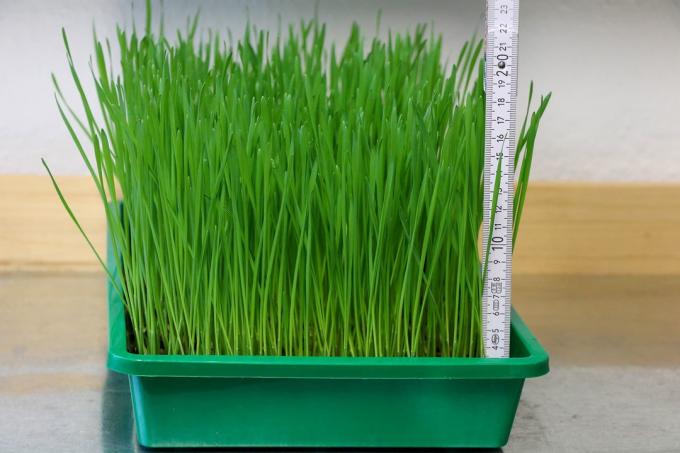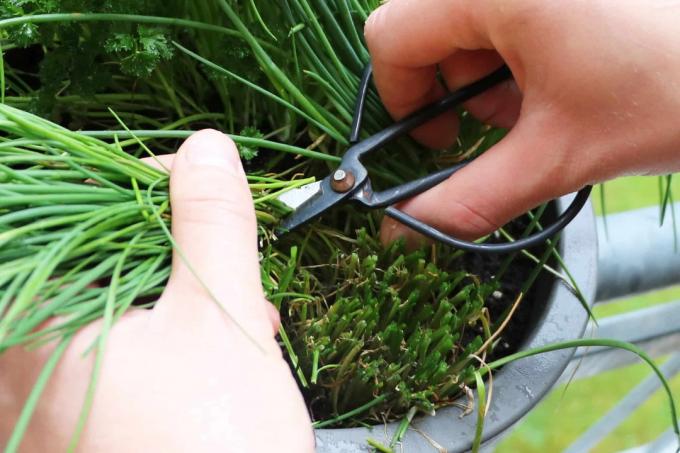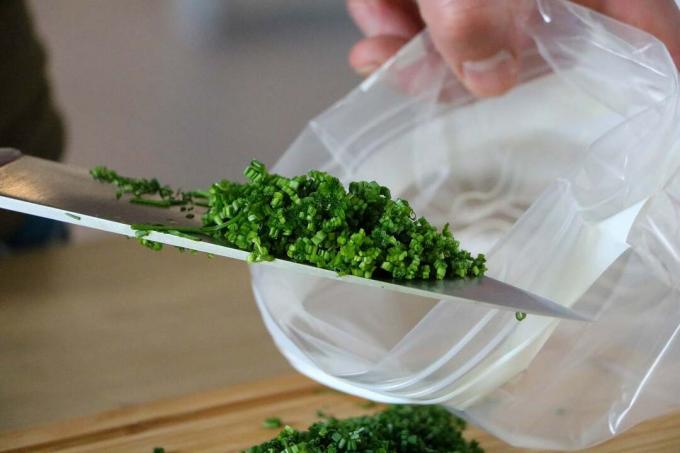
Chives are a common culinary herb that can be harvested several times a year if you cut them properly. But what does the right cut look like so that it can grow back?
In a nutshell
- Cut chives regularly
- From a certain length
- Not too deep
- Use appropriate tools
Table of contents
- Cut right
- Where to start?
- Appropriate cutting tools
- After the cut
- frequently asked Questions
Cut right
Chives can be cut all year round, whether for harvesting, to stimulate new growth or to prevent flowering. Pruning can be done from March/April to October. But what should you look out for when cutting the chives so you can regrow them?

- regular pruning advisable
- not only for the purpose of harvesting
- Cut stems before flowering
- from a minimum length of 15 cm
- on a warm, dry day
- Water the evening before if it is very dry
- cut back radically in autumn
- promotes healthy and lush growth
It is best not to cut each stalk individually, but rather small bundles. You grasp the required amount with your hand without squeezing the stalks and cut them off so that the stalks of the chives can also grow back. If you are specifically after the flowers, you should not cut all the stems before flowering. This also applies if you want to sow yourself.
Where to start?
Even if chives can be shortened without any problems, you shouldn't just cut them indiscriminately. If you cut off the stems in an unfavorable place or too deep, this can affect the remaining plants and even lead to them not sprout anymore. So where should you cut?
- best cutting point in the lower part of the stems
- don't just cut it in half
- After flowering, shorten all stems close to the ground
- the lower the cut, the stronger the new growth
- an inch or two off the ground
- Cut only one area of the plant at a time
- Thin out the plant systematically
- Leeks grow back evenly

Tip: If you cut chives halfway up, the top part of the remaining half dries up relatively quickly. In addition, pests can nest in the shortened stems.
Appropriate cutting tools
Only clean and sufficiently sharp cutting tools be used. This can be sharp kitchen scissors or a sharp knife without a serrated edge. So-called bypass scissors have also proven their worth. They have two blades, one upper and one lower, which enable a clean cut without crushing the clippings. What you shouldn't do is pluck the leeks. The result would be crushed stalks, rotting and the tearing out of individual plants, the stalks of the chives can then no longer grow on or off. regrow
After the cut
The harvested chives can be used fresh, dried or frozen, depending on use. After the last cut in autumn, the main thing is to get the plants through the winter.

- Chives basically perennial
- tolerates temperatures down to minus 25 degrees
- nevertheless cover with mulch, leaves or brushwood
- especially in the year of planting and particularly cold locations
- to mitigate ground frost
- divide leeks regularly to rejuvenate
- water less in winter
- only on frost-free days
- Remove spring cover
- nor rotted mulch
Tip: Leeks in the pot it is best to spend the winter bright, cool and frost-free. Since it needs longer phases with cold temperatures in winter, you should occasionally expose it to temperatures below 10 degrees for a short time.
frequently asked Questions
If possible, these double stalks should be planted above the split or cut crotch. In this way, both shoots are preserved and can continue to grow.
If the chives do not grow back after cutting or only sparsely, this is often because they have not been divided for a long time. Dividing is a form of rejuvenation for the plants and should be done in the fall about every three years. Afterwards, fertilizer in the form of an organic herbal fertilizer is recommended.
Once chives bloom, the stalks become woody and inedible. Then they should be cut off a few centimeters above the ground so that they can sprout again. However are the flowers are definitely edible. Only when they form seeds should they no longer be eaten.
